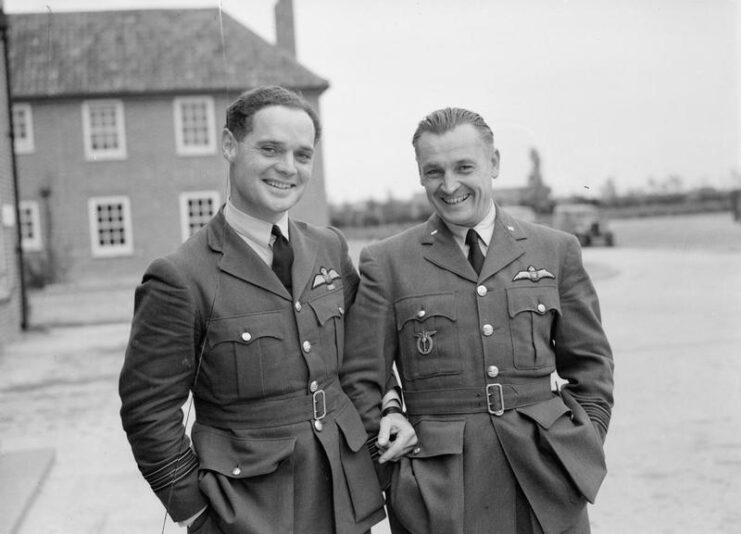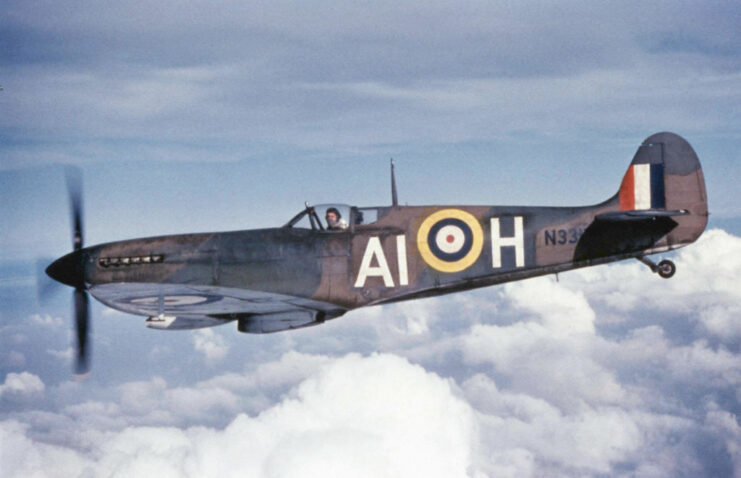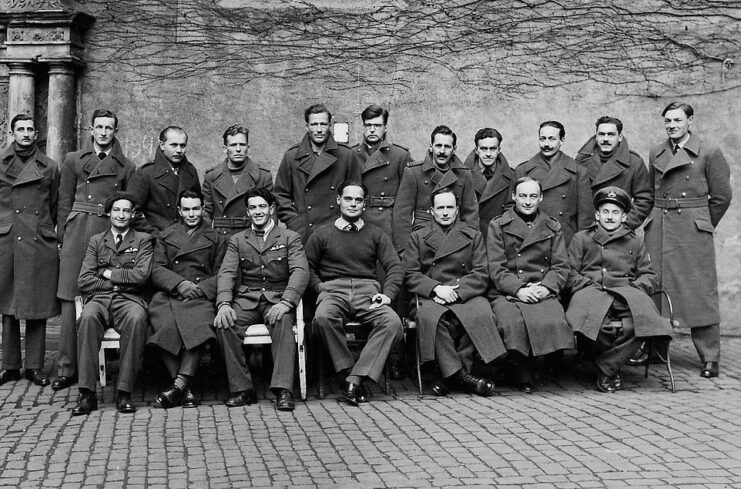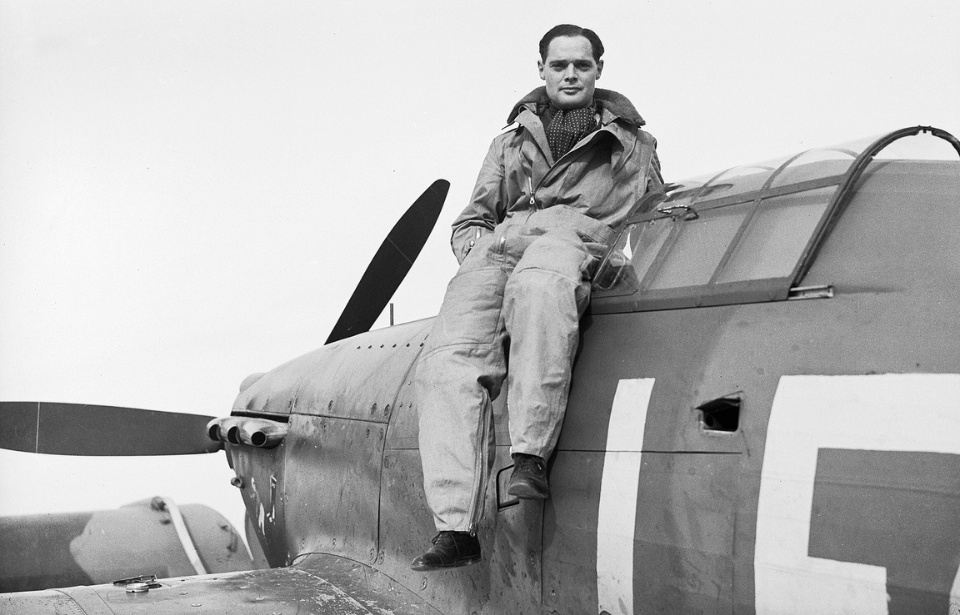It made sense that most Royal Air Force (RAF) pilots would be superstitious when one considers how much could go wrong, but if Wing Commander Douglas Bader was a superstitious man, he likely wouldn’t have gone up on the day he went down. The ill-fated mission resulted in his capture by the enemy, with him being sent to the infamous Colditz Castle.
Douglas Bader was determined to serve his country

Douglas Bader was born on February 21, 1910. Following his graduation from St. Edward’s School, in Oxford, he attended Royal Air Force College Cranwell, from which he received a commission as a pilot officer in July 1930. About a year and a half later, the aviator was involved in an aerobatics incident, which resulted in the loss of both of his legs.
While this would have grounded most people, Bader was determined to not let his disability keep him from the cockpit. While he was medically retired from the RAF shortly after the accident, the growing threat posed by Germany in Europe made him pester the Air Ministry until he was granted permission to re-enlist. After attending a refresher course, he was posted to No 19 Squadron RAF.
As the battles of France and Britain raged, Bader was transferred to various squadrons, taking leadership roles in each and aiding in bringing up morale. He was named a Companion of the Distinguished Service Order for his efforts during this time, and he was awarded the Distinguished Fly Cross in January 1941, for taking out 10 enemy aircraft and damaging several more.
Just a few months later, Bader was promoted to Acting Wing Commander and given control of 12 Group’s “Big Wing” – fighter squadrons tasked with intercepting enemy bomber formations.
An ill-fated mission against German aircraft

The takeoff from RAF Tangmere, in Sussex, wasn’t easy, and that was just the beginning of Douglas Bader’s troubles. One of his three squadrons got lost over the English Channel and his Supermarine Spitfire‘s speed indicator malfunctioned.
His squadrons crossed the French coast at 30,000 feet and snuck up on a dozen Messerschmitt Bf 109s flying 2,000 feet below. Bader radioed his men, picked his target and dove toward it, but he missed it so badly that he was in danger of ramming it. This forced him to jerk up on the stick and rudder as his Spitfire dovetailed into the depths.
Angry and alone, Bader flattened out at 24,000 feet, and he was about to climb and rejoin the rest of his squadron when he saw six other Messerschmitts aimed and angled the other way. This time, he was alone, and while his better judgment told him there was too much danger in engaging, fortune favors the bold, as they say, and he launched himself into combat.
Bader blew two of the enemy aircraft out of the sky, before the others turned on him. Rather than turn and run away, he steered his Spitfire between the first two – and felt something hit him. His nose dipped and Bader pulled back on the stick so hard that it actually broke off in his hands.
Behind him, his fuselage, tail and fin were gone, courtesy of a Messerschmitt propeller. Bader was going down.
Douglas Bader becomes a prisoner of war (POW)

One of Douglas Bader’s prosthetic legs got caught on the Spitfire on his way out. This found him in the peculiar position of being dragged behind his aircraft as it plummeted to the earth. His leg snapped free, and his parachute opened at just enough altitude to ensure he didn’t die.
Next thing he knew, Bader awoke to two German soldiers removing his parachute. He was then transported to a hospital in Saint-Omer, France, where he was surrounded by astounded enemy doctors who’d never seen a one-legged pilot before.
Other soldiers’ experiences as prisoners of war (POWs) run from the sanguine to the horrifying, but, for Bader, it sounded almost pleasant. His peculiar complication had drawn the attention of high-ranking German officers. He was invited him to have tea with Adolf Galland and was even given permission to sit in a Messerschmitt.
Bader thought about escaping in the aircraft – he’d have dinner at the mess that night and then go home to his wife, Thelma. They would maybe even go dancing. Ultimately, he was glad he didn’t, because what he didn’t know was that he was being covered by a German officer with a loaded pistol.
Sent to Colditz Castle

Finally, Douglas Bader got his chance to escape. He’d made connections during his time at Saint-Omer and slipped out under the cover of night to rendezvous with a safe house, en route to safety with the Resistance.
Sadly, it wasn’t to be. The Germans promptly showed up and hauled him back to camp. He tried his best to exonerate the people he was staying with, but failed. Once back, Bader had his legs taken from him; the Germans weren’t taking any more chances.
Even without his legs, the British wing commander proved to be a pain in the side of his captors. They bounced him around between prisoner of war camps after repeated escape attempts, before finally tiring of his candor and throwing him into the impregnable fortress at Colditz, where he was liberated by the Americans in April 1945.
More from us: Charles Lightoller: The Titanic Second Officer Who Helped Evacuate Over 120 Men at Dunkirk
Want War History Online‘s content sent directly to your inbox? Sign up for our newsletter here!
Douglas Bader’s story was immortalized in Paul Brickell’s 1954 book, Reach for the Sky: The Story of Douglas Bader, and it was made into a film in ’56. In comparison to his wartime exploits, his post-war life was idyllic and charming. He returned to his job in the oil industry, was knighted in 1976 and died in ’82, at age 72.
